Abstract
A phyllospheric bacterial culture, previously reported to partially replace nitrogen fertilizer (B. R. Patti and A. K. Chandra, Plant Soil 61:419-427, 1981) was found to contain a fluorescent pseudomonas which was identified as Pseudomonas putida and a Corynebacterium sp. The P. putida isolate was found to produce an extracellular cutinase when grown in a medium containing cutin, the polyester structural component of plant cuticle. The Corynebacterium sp. grew on nitrogen-free medium but could not produce cutinase under any induction conditions tested, whereas P. putida could not grow on nitrogen-free medium. When cocultured with the nitrogen-fixing Corynebacterium sp., the P. putida isolate grew in a nitrogen-free medium, suggesting that the former provided fixed N2 for the latter. These results suggest that the two species coexist on the plant surface, with one providing carbon and the other providing reduced nitrogen for their growth. The presence of cutin in the medium induced cutinase production by P. putida. However, unlike the previously studied fungal systems, cutin hydrolysate did not induce cutinase. Thin-layer chromatographic analysis of the products released from labeled apple fruit cutin showed that the extracellular enzyme released all classes of cutin monomers. This enzyme also catalyzed hydrolysis of the model ester substrates, p-nitrophenyl esters of fatty acids, and optimal conditions were determined for a spectrophotometric assay with p-nitrophenyl butyrate as the substrate. It did not hydrolyze triacyl glycerols, indicating that the cutinase activity was not due to a nonspecific lipase. It showed a broad pH optimum between 8.0 and 10.5 with 3H-labeled apple cutin as the substrate.(ABSTRACT TRUNCATED AT 250 WORDS)
Full text
PDF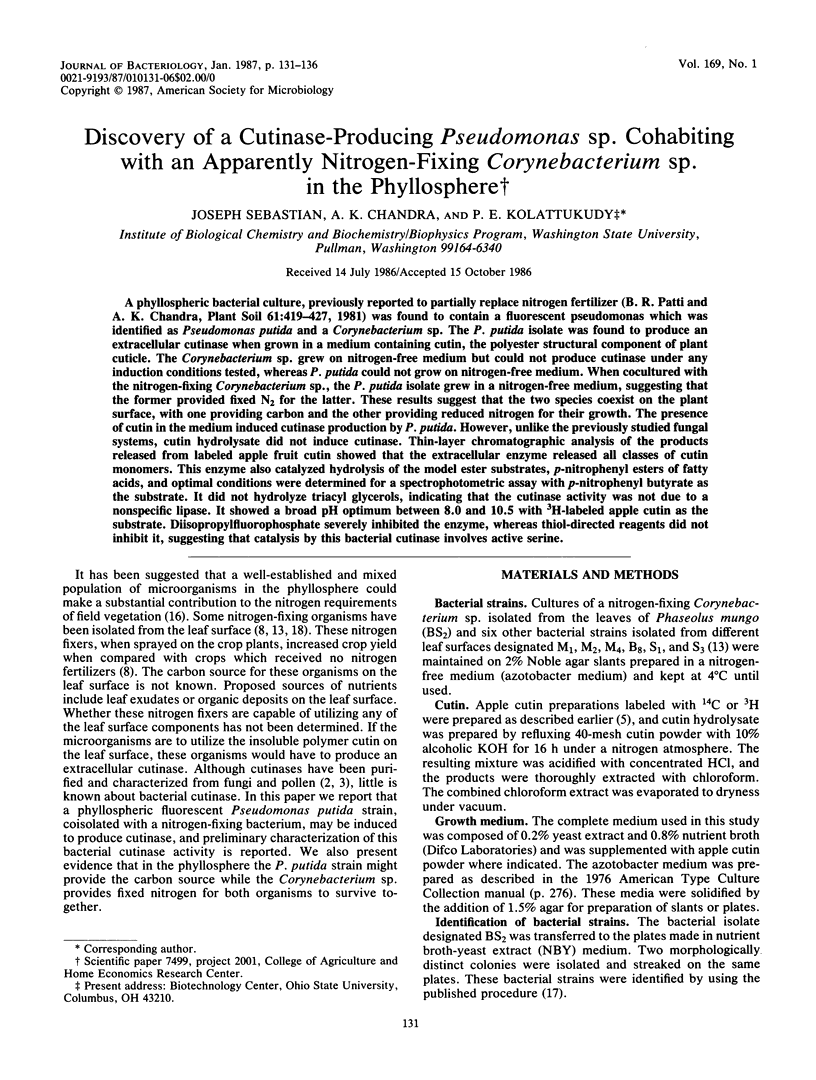
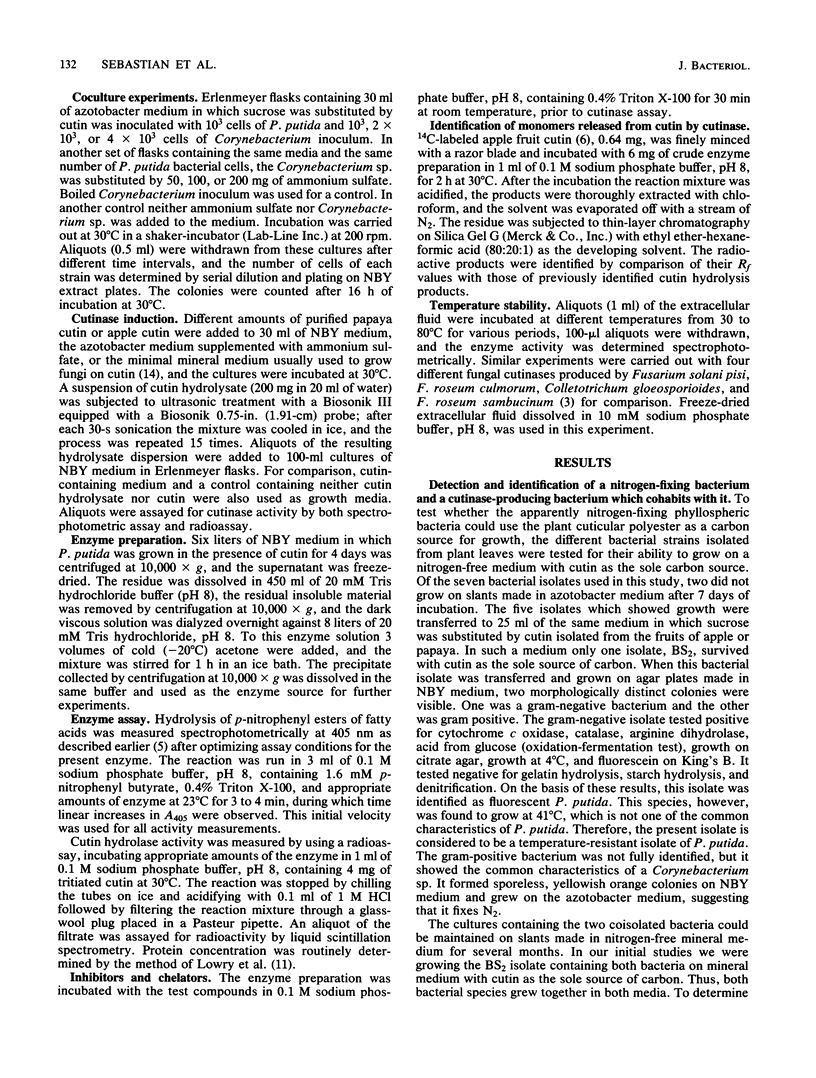
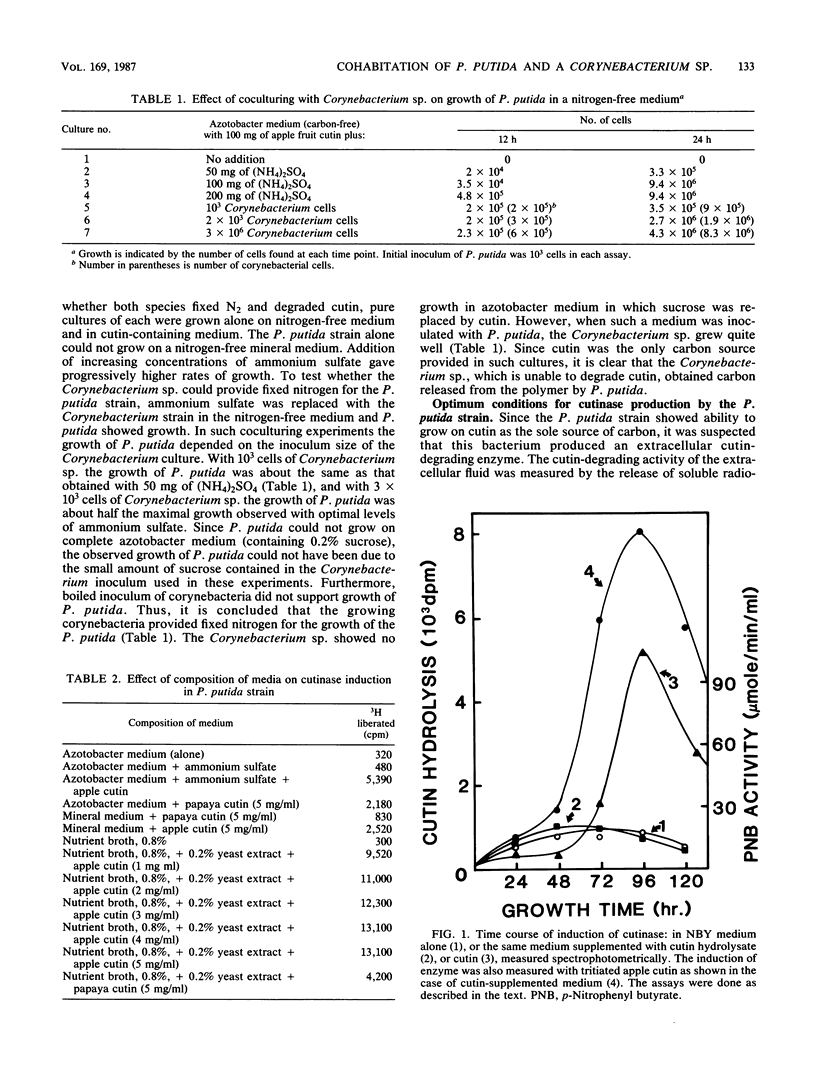
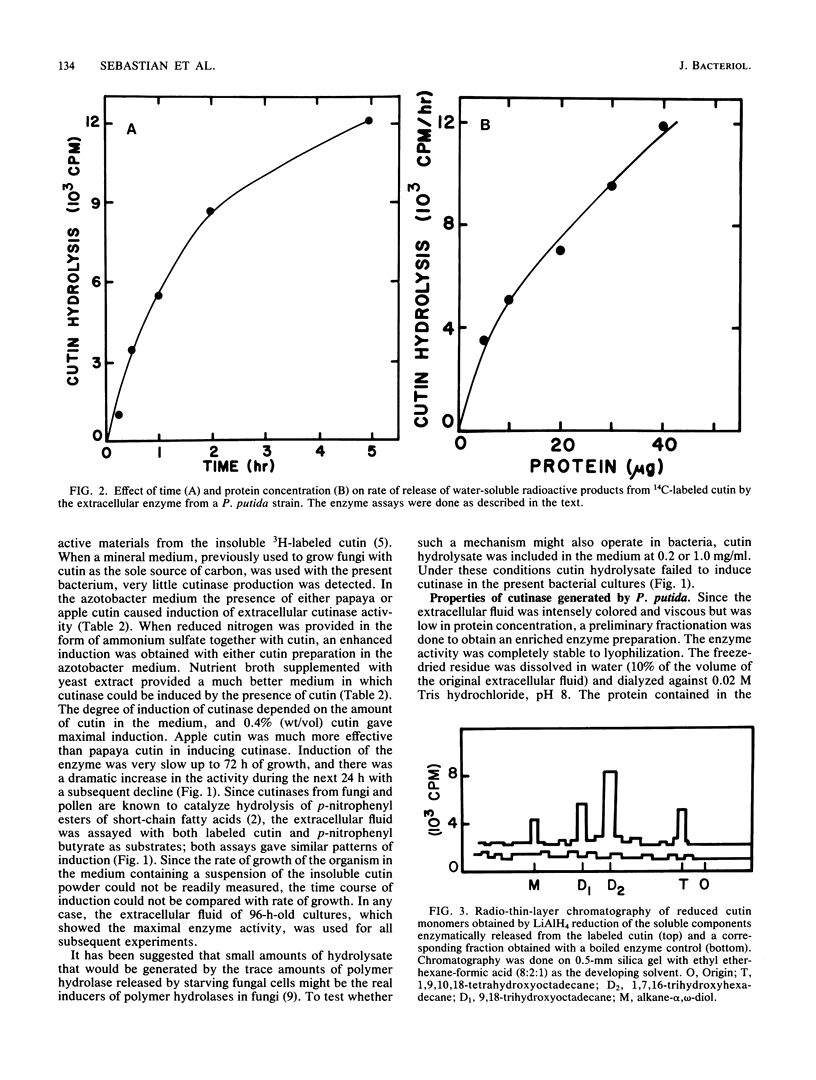
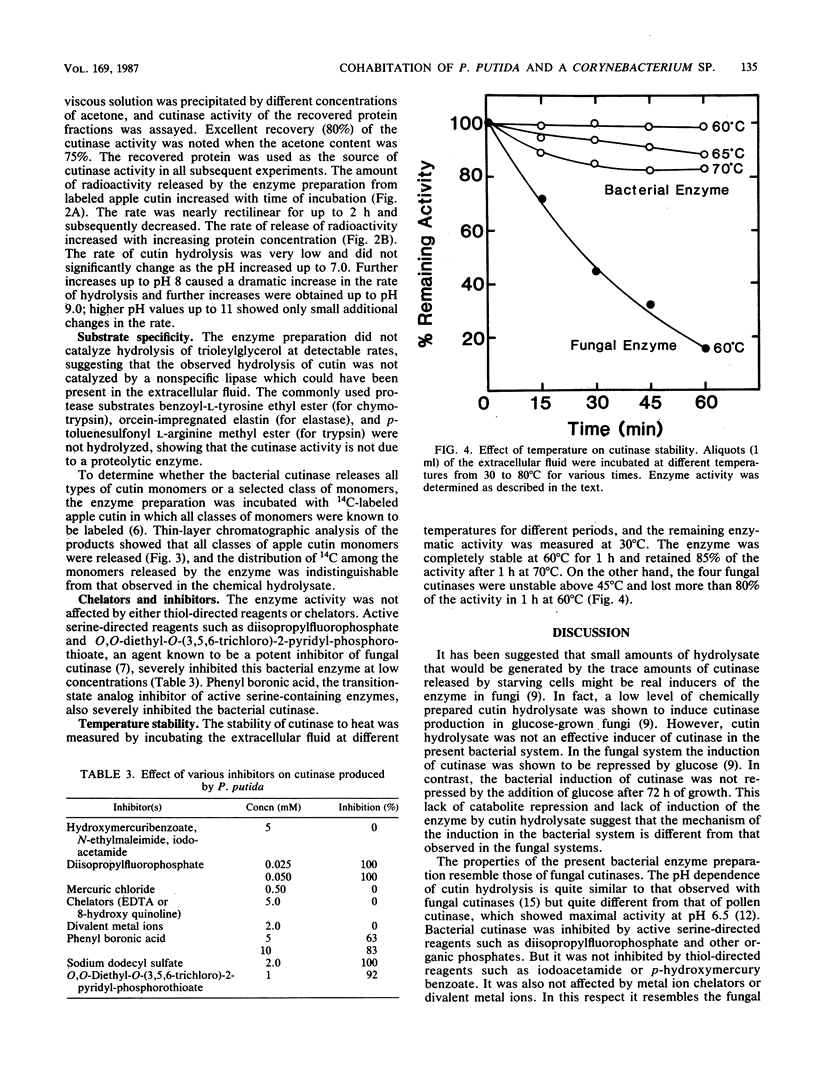
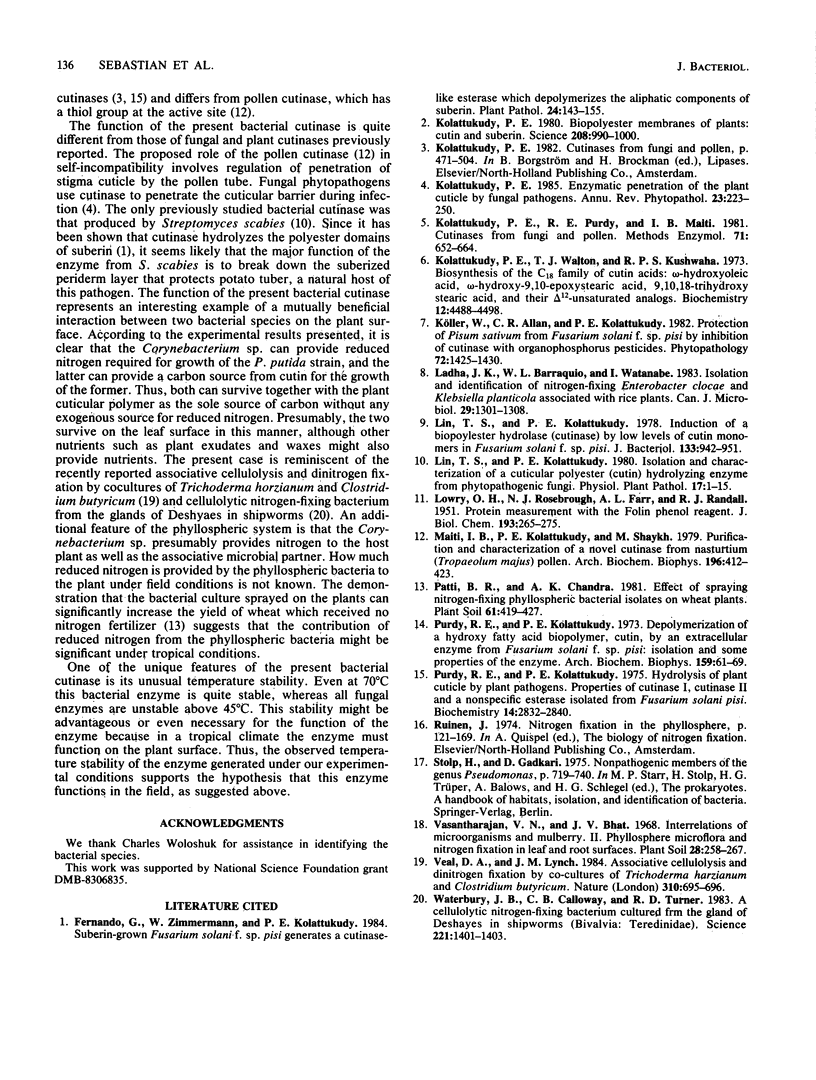
Selected References
These references are in PubMed. This may not be the complete list of references from this article.
- Kolattukudy P. E. Biopolyester membranes of plants: cutin and suberin. Science. 1980 May 30;208(4447):990–1000. doi: 10.1126/science.208.4447.990. [DOI] [PubMed] [Google Scholar]
- Kolattukudy P. E., Walton T. J., Kushwaha R. P. Biosynthesis of the C18 family of cutin acids: omega-hydroxyoleic acid, omega-hydroxy-9,10-epoxystearic acid, 9,10,18-trihydroxystearic acid, and their delta12-unsaturated analogs. Biochemistry. 1973 Oct 23;12(22):4488–4498. doi: 10.1021/bi00746a029. [DOI] [PubMed] [Google Scholar]
- LOWRY O. H., ROSEBROUGH N. J., FARR A. L., RANDALL R. J. Protein measurement with the Folin phenol reagent. J Biol Chem. 1951 Nov;193(1):265–275. [PubMed] [Google Scholar]
- Lin T. S., Kolattukudy P. E. Induction of a biopolyester hydrolase (cutinase) by low levels of cutin monomers in Fusarium solani f.sp. pisi. J Bacteriol. 1978 Feb;133(2):942–951. doi: 10.1128/jb.133.2.942-951.1978. [DOI] [PMC free article] [PubMed] [Google Scholar]
- Maiti I. B., Kolattukudy P. E., Shaykh M. Purification and characterization of novel cutinase from nasturtium (Tropaeolum majus) pollen. Arch Biochem Biophys. 1979 Sep;196(2):412–423. doi: 10.1016/0003-9861(79)90292-3. [DOI] [PubMed] [Google Scholar]
- Purdy R. E., Kolattukudy P. E. Depolymerization of a hydroxy fatty acid biopolymer, cutin, by an extracellular enzyme from Fusarium solani f. pisi: isolation and some properties of the enzyme. Arch Biochem Biophys. 1973 Nov;159(1):61–69. doi: 10.1016/0003-9861(73)90429-3. [DOI] [PubMed] [Google Scholar]
- Purdy R. E., Kolattukudy P. E. Hydrolysis of plant cuticle by plant pathogens. Properties of cutinase I, cutinase II, and a nonspecific esterase isolated from Fusarium solani pisi. Biochemistry. 1975 Jul;14(13):2832–2840. doi: 10.1021/bi00684a007. [DOI] [PubMed] [Google Scholar]
- Waterbury J. B., Calloway C. B., Turner R. D. A cellulolytic nitrogen-fixing bacterium cultured from the gland of deshayes in shipworms (bivalvia: teredinidae). Science. 1983 Sep 30;221(4618):1401–1403. doi: 10.1126/science.221.4618.1401. [DOI] [PubMed] [Google Scholar]


